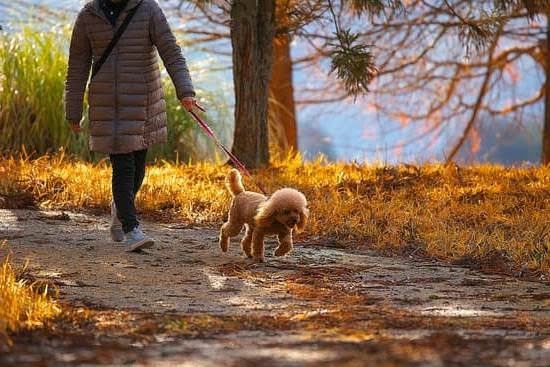Introduction
Training your dog not to jump on counters is an essential skill for any responsible dog owner. Not only is it unsafe and unhygienic for your pet, but it can also lead to costly damage to items within easy reach of the counter surface. Establishing boundaries provides clear communication of expectations and limits to your canine companion and can help them understand how they should behave in the home. With patience, consistency, and reward-based training techniques you can ensure that your pup abides by this rule, saving yourself from costly messes, frustration, and potential danger down the road.
Defining the Issue
To start training your dog not to jump on the counters, it is important to get to the heart of what is motivating his behavior. Jumping can be a sign of excitement or a lack of understanding appropriate social cues and boundaries. Dogs are creatures of habit and if they have been allowed onto the counters in the past it will take some effort to teach them that this behavior is now unacceptable. Once you understand why your dog might be jumping on the counters you can begin taking steps to address the issue.
Practical Solution: Clear-cut Rules and Consistent Training
The best way to train your dog not to jump on countertops is to make clear-cut rules while remaining consistent with their training. Make sure all people in your household agree on the rules and strive for consistency when providing rewards and punishments for behaviors. Whenever you see your pet going near a countertop, give commands with a firm voice such as “No” or “Down”, accompanied by an appropriate punishment or reward depending on their response (if any). Keep this up until your dog has learned which actions are acceptable and which are not. In order for this training method to be successful, it is important that you remain consistent in rewards given after desired behaviors as well as punishments given after undesired behaviors. Additionally, provide verbal recognition when they obey by calmly saying “Good job” followed by a treat or other desirable reward.
Preparing for Training
When training your dog not to jump on counters, it is important to prepare the environment and choose the right equipment. First, it’s important to choose an area of your home that is free from distractions where both you and your pup can focus on learning. Do not use any equipment that could scare or hurt your pup, such as a shock collar or prong collar, as this will only impede the progress of the training. Instead, use positive reinforcement tools, such as treats or toys more likely to encourage desirable behaviors. Creating a comfortable environment for your dog on your countertop is also important. To discourage counter-surfing, be sure to wipe down any spilled food residue or lingering scent of food with cleaners that do not contain ethanol or isopropanol alcohols as they may be pleasant smells for dogs. If a certain surface still seems like a draw for your pup after the routine cleaning, try using “bitter sprays”; these utilize an unpleasant taste to discourages dogs from jumping up in the same location again.
Establishing and Maintaining Clear Expectations
When training your dog not to jump on counters, the first step is to establish and maintain clear expectations. This means setting clear and specific rules for your pet to follow. Make sure that you communicate these rules consistently each time and reinforce them with positive reinforcement. For example, when your pup is tempted to jump on the counter, say “no” in a firm voice, then offer them an alternative behavior such as sitting or lying down instead. Repeat this phrase with each approach to the counter until they understand what they should do.
Giving Reward-Based Commands: How To Use Positive Reinforcement
Along with clear expectations and physical guidance (such as placing the dog in a sit or down position), reward-based commands may be used in conjunction with verbal cues. These types of commands give your furry friend something tangible (treats) to work toward while developing an understanding that their desired behavior will be rewarded. Additionally, it will also increase the value that they place on obedience and make it more likely that they will adhere to your requests overall. Each time your pet correctly follows a verbal cue, provide them with a treat as reinforcement. It may take some trial and error but by using rewards you can speed up the process of learning and build trust between yourself and your pup!
Treating for Good Behavior
The best way to teach your dog not to jump on counters is by rewarding them for good behavior and ignoring bad ones. Begin training your dog by making sure that your pup understands what behavior you expect from him around counters. Start by teaching him the stay command; have him stand and stay in front of the counter and practice until he understands what you are asking of him. When rewarding good behavior, do so with treats or verbal praise; whatever works best for your pup!
To implement this system, whenever your puppy steps away from the counter, give them a treat or offer verbal praise. This will help reinforce their good behavior and create a positive association for them around the counter. On the other hand, if your dog tries to jump on the counter, ignore them – no eye contact, no speaking to them in any way. Your pup will soon learn that they don’t get any rewards when they jump on the counter! Additionally, make sure you practice these commands frequently and consistently as much as possible to train your pup not to jump on counters effectively and quickly.
Building Consistency
Building consistency in your training is essential if you want to successfully teach your dog not to jump on counters. Your dog must be able to respond to your commands in all situations and environments, not only when it’s convenient for them. To ensure this, create a routine for practice that fits into your daily life without becoming tedious or overwhelming. Make sure you’re consistently using the same commands and reinforcement methods. And if your pup isn’t responding well, break down the command into smaller pieces and stay consistent with rewards each time they follow through. Also, never remain silent or hold back a reward because they didn’t do what you wanted – always reinforce a small success step by step, as that’s how a successful learning process flourishes. Lastly, set aside regular practice times with training sessions no longer than 15 minutes at a time so that everyone involved stays focused on the task at hand rather than feeling overwhelmed or frustrated with their progress.
Dealing with Slip-Ups
Whenever your dog tries to jump on the counter, you should immediately stop them and redirect their attention elsewhere. This could be through providing positive reinforcement through a toy or treat. Keep in mind that these rewards should not be given every time the dog applies inappropriate pressure, but rather when they choose to take the alternate behavior instead of jumping on the counter. When they display good behaviors, make sure to give extra praise and rewards.
If your pup is still struggling with understanding what exactly you want them to do, it may be best to reset their progress by creating physical boundaries. For example, if your dog continues to try and jump on the counter despite constant correction and reinforcement for other actions, try blocking entry with tall walls or an obstacle course so that it impedes their ability to jump at all. This will not only help you stay consistent in your expectations but also help your pup understand boundaries without being overly frustrated from unsuccessful attempts at executing desired behaviors.
Troubleshooting
If your dog continues to have difficulty breaking the habit of jumping on counters, there are some additional strategies you may want to consider. First, try bringing some structure and consistency into their routine by establishing clear commands and expectations and reinforcing them with consistent reward. Start by teaching your dog a “down-stay” command which allows them to know when they should stay put and not come closer. Next, raise the bar by only rewarding them for behaviors you prefer such as staying off counters in the kitchen, so they will internalize those habits faster.
While more work is needed if you want your pup to totally stop counter surfing, it can be beneficial to create physical barriers like a fence or baby gate that blocks off easier reached areas they may be attracted to, while simultaneously allowing them freedom of movement within the house. It may take some time for them to get accustomed to having limitations around certain areas but making sure their needs are met with plenty of healthy snacks and chews during training can help accelerate their progressduring training. Finally, reevaluate the situation after each session; make sure that you are comfortable with changes introduced before moving onto different behaviour areas.
Summary and Conclusion
Training a dog not to jump on counters or other similar surfaces is important for maintaining a safe and sanitary kitchen. Start by teaching basic commands and providing positive reinforcement when the dog listens. Next, begin implementing negative reinforcement when the dog attempts to jump up, such as making loud noises or other distractions. Finally, make sure that any food that is left on counters is inaccessible to your pup so they don’t have any additional incentives! If you need help training your pup not to jump on counters, there are many helpful resources available online and through veterinarians. Following these steps should help you train your pup out of this habit in no time.

Welcome to the blog! I am a professional dog trainer and have been working with dogs for many years. In this blog, I will be discussing various topics related to dog training, including tips, tricks, and advice. I hope you find this information helpful and informative. Thanks for reading!





